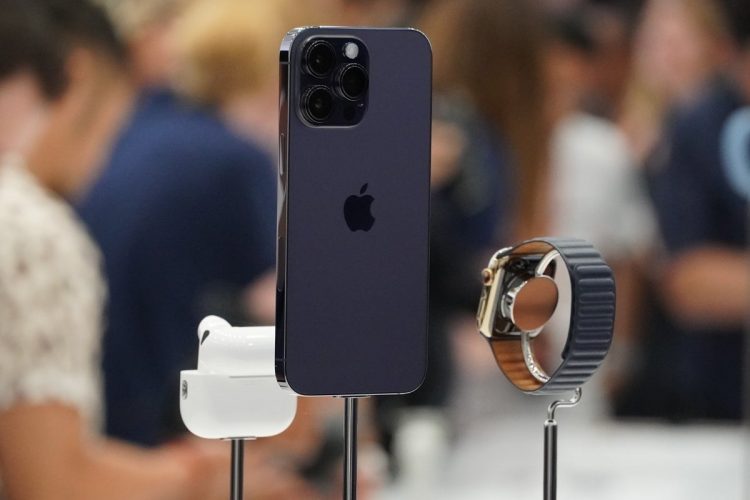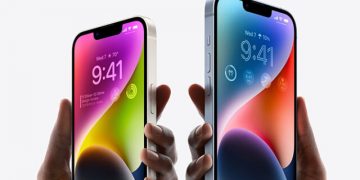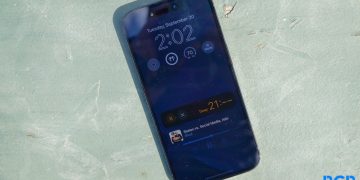Apple’s move to eliminate the SIM tray in US models of its new iPhone 14 could be a bigger move than its decision to abandon the old headphone port with iPhone 7. The obvious questions: what does eSIM offer and how do you provision devices?
Apple’s journey to eSIM
Apple first introduced electronic Subscriber Identity Module (eSIM) support in the iPhone XS, but it was optional — the handset also had a SIM tray for use with physical SIM cards. But Apple’s newly introduced iPhone 14 line-up has no SIM tray in the US, which means carriers must provision the device exclusively using an eSIM. (The new iPhones arrive on Friday.)
It’s likely the company is trying to accelerate eSIM adoption with the move even though Apple smartphones sold outside the US will continue to host SIM trays.
What is an eSIM?
An eSIM is a built-in programmable identity module placed inside the iPhone itself. It’s like a hard-wired SIM, but must be provisioned by the networks, who must also upgrade their own systems to accommodate their use.
Just like a physical SIM card, an eSIM carries a 17-digit code that shows your country of origin, carrier, and unique user ID.
Apple’s decision to move to the eSIM is fine if your carrier supports the technology, but the decision to make it mandatory could prove challenging for a small number of US customers whose carriers don’t. I received several messages apparently from readers in the US on smaller carriers complaining about Apple’s decision when it was announced. Hopefully, the carriers will play ball.
The pros and cons of eSIM use
Apple’s move to eSIM will probably have little impact on most people’s experience. But there are pros and cons to its use.
One pro is that you no longer need to use a physical SIM, which means moving between handsets might become a little easier when your carrier supports eSIM. There is likely also a positive impact in terms of ensuring iPhones remain water resistant, as the removal of the tray also means the removal of an opening in the case.
Another advantage: you can have multiple lines installed. Apple says you can store at least eight different eSIMs on the device and have any two active at any time. When you have multiple eSIMs installed, the two “active” numbers can make and receive voice and FaceTime calls and send and receive messages using iMessage, SMS, and MMS. Your iPhone will still only use one mobile data network at a time.
One con is that use of eSIM makes it much harder for international travellers to simply pick up a Pay As You Go (PAYG) SIM to use with their device once they reach their destination. Given hefty roaming charges, this might be a big negative for frequent travellers, particularly those travelling to nations in which eSIMs are not available, though providers such as GigSky may be able to help some travellers plug this gap.
Another potential negative would arise if carriers then decide to begin levying hefty fees against users attempting to provision an eSIM, or use the tech to make it even harder to migrate devices between networks.
[Also read: 14+ reasons enterprises should upgrade to iOS 16]
How to setup an iPhone eSIM
There are several ways to setup an eSIM on an iPhone. These include eSIM Carrier Activation, eSIM Quick Transfer ,and other activation methods. Here’s a list of carriers and how they support eSIM.
-
How to use eSIM Network Provider Activation
This means your network provider assigns an eSIM to your iPhone on purchase. If an eSIM was assigned to your iPhone when you bought it, turn on your iPhone and follow the instructions to activate your eSIM.
If you are moving to a new device the line is frequently provided via a QR code which must be scanned by your device. It may also be provided within your network provider’s iPhone app. Alternatively, you might receive a notification that says Provider Mobile Data Plan Ready to Be Installed, which you should approve.
-
How to use eSIM Quick Transfer to convert a physical SIM
If your carrier supports eSIM Quick Transfer, you can convert your physical SIM to an eSIM when you set up your iPhone (you won’t need to contact your network provider). To do so, open Settings>Cellular and tap the Convert to eSIM button, if it is available. It that button is not available, you will need to contact your carrier. If the button does exist, tap Convert Cellular Plan, and then choose Convert to eSIM. Once the eSIM is activated, your SIM card will be deactivated, at which point you should remove the physical SIM and reboot your iPhone. You will see an option that enables you to transfer the eSIM to another device once the process is complete.
-
How to use eSIM Quick Transfer to transfer your line
First, ensure both the old and new iPhones are running iOS 16. Then open Settings>Mobile Data>Add Data Plan. You should see one or more mobile data plans to “transfer from another device,” or tap Transfer From Another Device. You’ll be provided with instructions on your older device that you must follow to transfer the line, and may be asked for a verification code. Then wait until the transfer takes place. You may receive a message asking you to Finish Setting Up Your Network Provider’s Data Plan. Follow this to be redirected to your network provider’s web page to transfer your eSIM to your new device.
It is important to note that not every carrier supports all the different ways in which to transfer your line.
-
You may need to enter details manually
It is possible your carrier will choose to supply you with details you must enter into your device manually in order to activate an eSIM. You’ll enter these in Settings>Cellular or Mobile Data>Add Mobile Data Plan and then select Enter Details Manually.
Preparing your device for sale
You may need to erase your eSIM, particularly if you choose to assign it to another device or are preparing to trade or sell on your existing iPhone. This is easy to achieve, just open up Settings>Cellular or Mobile Data where you should select the plan you want to get rid of and then choose Delete SIM.
How is it for you?
I’m particularly interested in learning if the process is more or less complicated for large device deployments and the process (if any) of remote provisioning of eSIM for IT admins. Drop me a line if you have insight into this.
Please follow me on Twitter, or join me in the AppleHolic’s bar & grill and Apple Discussions groups on MeWe.
Copyright © 2022 IDG Communications, Inc.
Source by www.computerworld.com




























